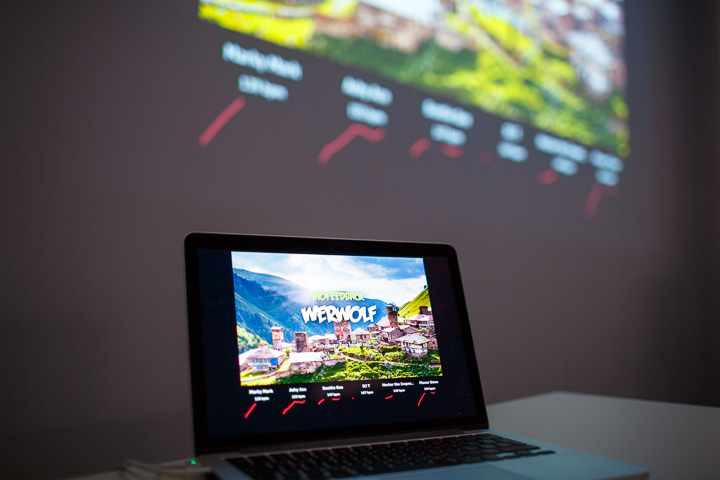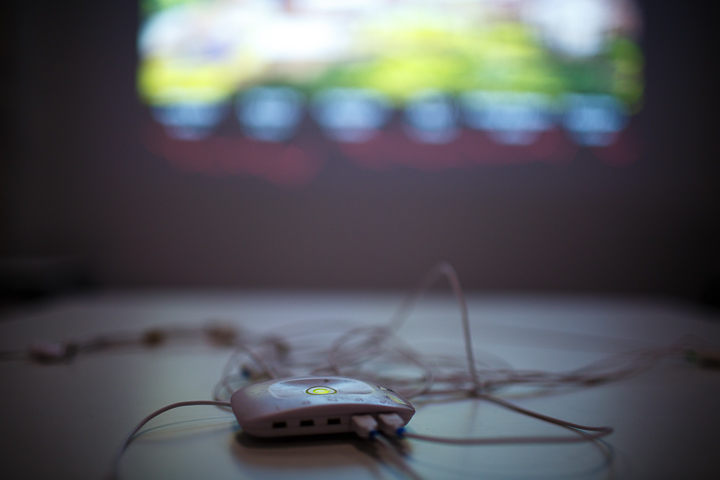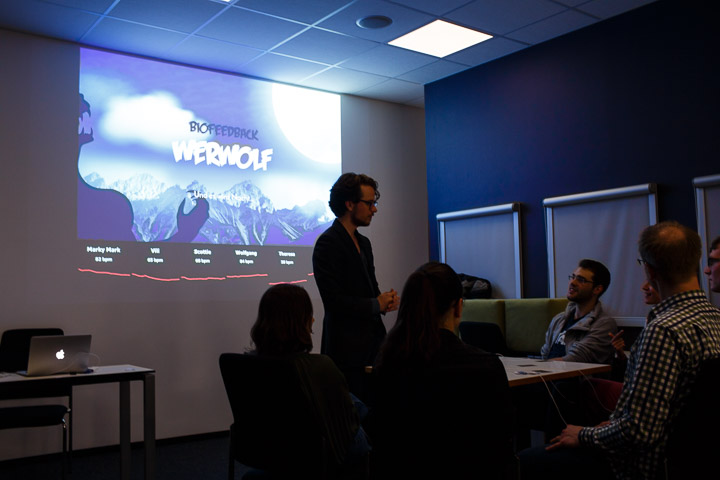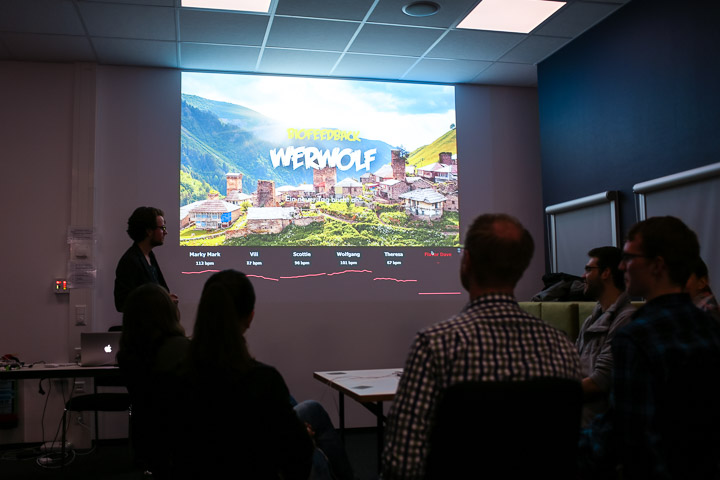The Biowolf is Lose!
Biofeedback Boardgames at the Night of Science
24.11.2017 – Karlsruhe, Germany

The scene: A peaceful village located in the swiss alps, surrounded by mountain sites, populated by fun-time loving villagers.
The obscene: When the night comes, the moon rises and a frightening howl sounds through the air... A werewolf is amongst the villagers. He crawls through the village streets, looking to quench his thirst for blood. Suddenly, he rips one of the villagers from his sleep, only to send them back to it for eternity. As the morning breaks, the other villagers awake, most of them not even being aware of what has occured. But, then a body is found, sending the village to shock in realizing the tragedy that has taken place.
Well, at least that is the usual version of the werewolf party game. In this instance however, we decided to take gameplay one step further, integrating villager life sign detection by physiological sensing technology and augmenting villager care by biofeedback displays of everyones' heart rates. As every villager is equipped with ECG sensors, the actions of the werewolf at night are signalled by the sound of a flatlining ECG monitor. As the morning breaks however, that does not appear to be the only change in heart rates. Suspiciously, one of the villagers' hearts seems to beat faster, maybe being shocked from the nightly tragedy, or maybe reveiling fear of being caught and pursued for the frivalous actions of the night?
This idea is what we sought out to test during the night of science that was held at Karlsruhe Intitute of Technology (KIT), in our case at the KD2Lab, where we usually conduct psychophysiological experiments. What can we say about Biowolf's gameplay and lie detection potential? Well aside from seeing that it lead players to introspect and discuss what might be causing their heart rate to react, the aforementioned effect of first morning heart rate spikes in werewolf might be something worth investigating. At least in playing it some more. At the very least, it did look like a lot of fun...
If you are interested in trying it out yourself, feel free to contact me for a copy of the code.



Contributors to this project:
- Michael T. Knierim
- Maximilian Stauss
Publications related to this project:
- Al Mahmud et al. (2007) – Affective Tabletop Game: A New Gaming Experience for Children
- Järvelä et al. (2016) – Intragroup Emotions: Physiological Linkage and Social Presence
- Yamabe et al. (2010) – Biofeedback Training with EmoPoker: Controlling Emotional Arousal for Better Poker Play